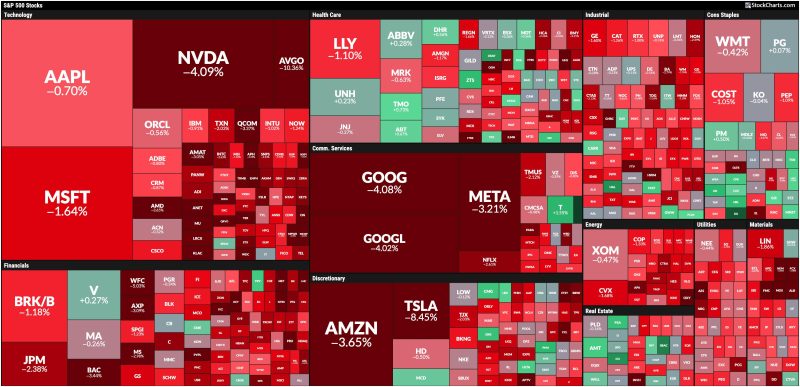
Riding the Wave: Maximizing Your Portfolio During a Stock Market Selloff
The recent broad-based stock market selloff has created concerns among investors worldwide, prompting many to reevaluate and adjust their investment portfolios to weather the storm. This market volatility, while unsettling, also presents opportunities for savvy investors to position themselves strategically for long-term success. Here are some key steps you can take to navigate this challenging market environment and position your portfolio for resilience and growth:
1. Diversify Your Portfolio: One of the most fundamental principles of building a resilient investment portfolio is diversification. Spread your investments across different asset classes, industries, and geographies to reduce risk and increase the chances of capturing returns from various market segments. This can help cushion your portfolio during market downturns and limit the impact of volatility on your overall investments.
2. Focus on Quality Stocks: In times of market uncertainty, quality stocks with strong fundamentals tend to outperform. Look for companies with stable earnings, strong balance sheets, and reliable cash flows. These companies are better positioned to weather economic downturns and emerge stronger in the long run. Consider investing in companies with a history of consistent dividend payments or those in defensive sectors that are less sensitive to economic cycles.
3. Evaluate Your Risk Tolerance: Market volatility can test even the most seasoned investors’ nerves. Assess your risk tolerance and investment objectives to ensure that your portfolio aligns with your financial goals and time horizon. If you find yourself losing sleep over market fluctuations, consider rebalancing your portfolio to reduce risk exposure and protect your capital.
4. Stay Informed and Remain Disciplined: Keep yourself updated on market developments and economic trends that may impact your investments. While it can be tempting to make impulsive decisions during market downturns, it is essential to stay disciplined and stick to your investment strategy. Avoid making emotional decisions based on short-term market movements and focus on the long-term growth prospects of your investments.
5. Consider Alternative Investments: In addition to traditional stocks and bonds, consider incorporating alternative investments such as real estate, commodities, or private equity into your portfolio. These assets can provide diversification benefits and lower correlations with traditional asset classes, enhancing the overall risk-adjusted returns of your portfolio.
6. Rebalance Regularly: Periodically review and rebalance your investment portfolio to ensure that it remains aligned with your financial goals and risk tolerance. Rebalancing involves trimming positions that have appreciated significantly and adding to underperforming assets to maintain your desired asset allocation. This disciplined approach can help you stay on track and avoid chasing returns in overheated market segments.
In conclusion, navigating a broad-based stock market selloff requires a strategic approach and a long-term perspective. By diversifying your portfolio, focusing on quality stocks, evaluating your risk tolerance, staying informed, considering alternative investments, and rebalancing regularly, you can position your portfolio to weather market volatility and achieve your investment objectives. Remember to consult with a financial advisor to receive personalized guidance and set a strategy that suits your individual circumstances and goals.
